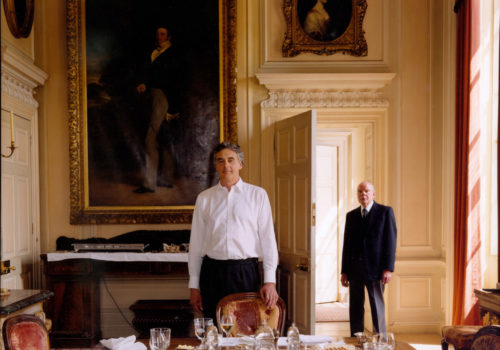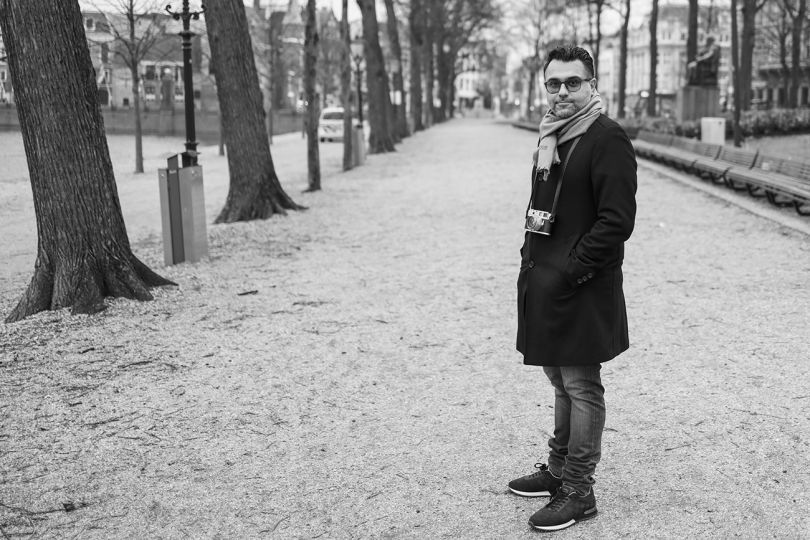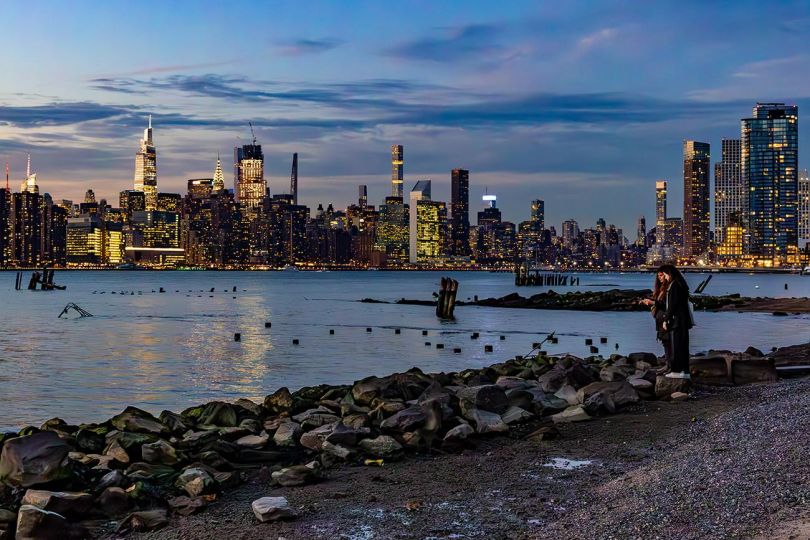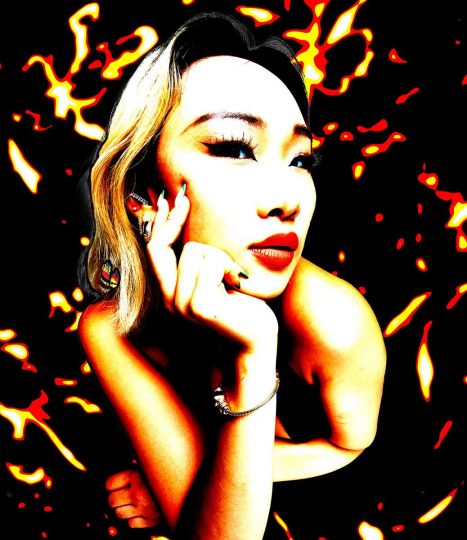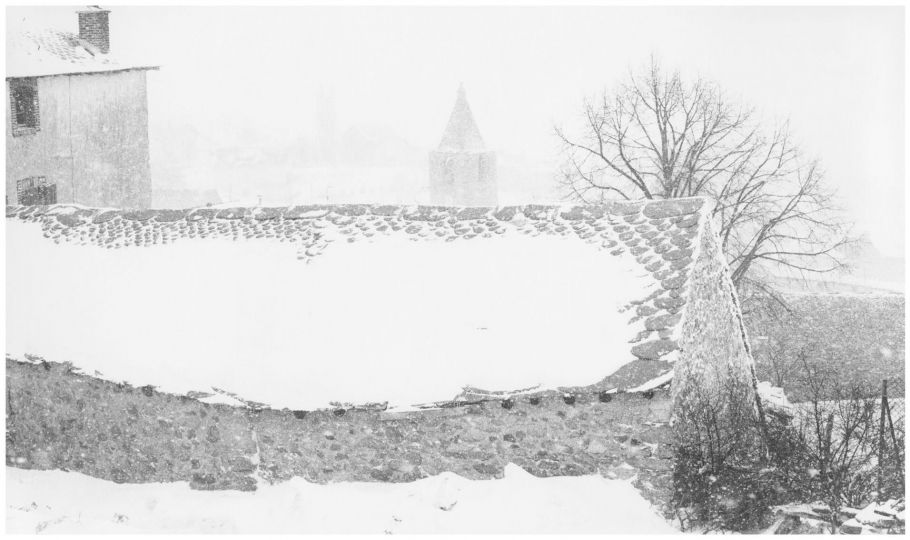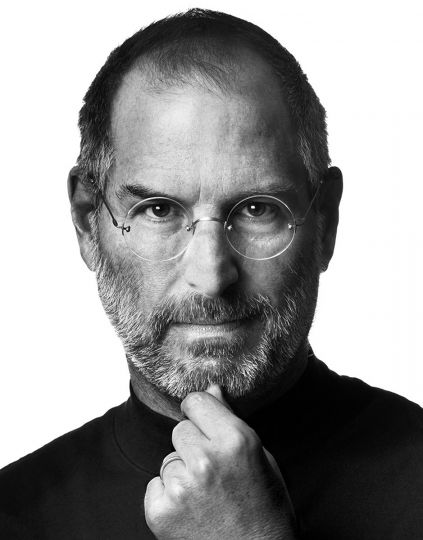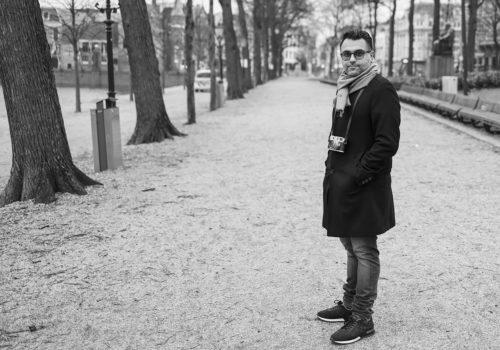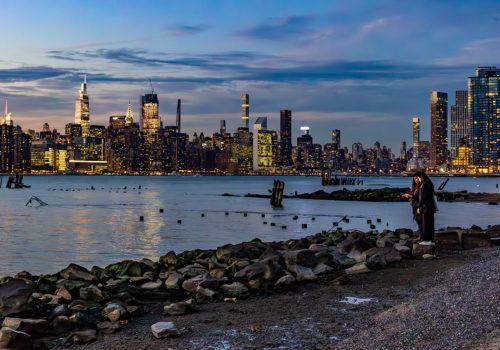Tina Barney began her photographic career in the mid 1970’s capturing images of her family & friends in New York and New England. In the 1980’s, she started using an 8 x 10 view camera and developed a more directed style of portraiture. Between 1996 and 2004, she traveled to Austria, Italy, England, Spain, France and Germany to create her series The Europeans, a look at the inner circle of the Old World elite. Her work has been exhibited and collected by major institutions around the world and she was the recipient of the John Simon Guggenheim Memorial Fellowship in 1991 and the 2010 Lucie Award for Achievement in Portraiture. The Frist Center for the Visual Arts in Nashville, Tennessee will be presenting a selection of 21 photographs from The Europeans opening on January 19th and concluding on May 10th. Jerry Atnip spoke with Tina Barney about the creation of this monumental body of work.
Jerry Atnip : After years of successfully photographing your own world, how did you come to the decision to venture overseas to begin The Europeans project?
Tina Barney : Well, I was getting sort of tired of photographing the same thing from 1977 to 1996. Some friends had suggested that I look into the American Academy in Rome, so I dived into trying to find connections there. I applied for a visiting artist stay which was only a month long and got it. When I arrived there, I only knew two people that could help me find subjects to photograph. It took a while to do that. When I began, it was so fantastic I thought I was in Heaven. I stayed there a month and since it was difficult to find people, I knew I had to go back. So, I traveled back to Rome three times for a month each: 1996, 1997 and 1998. While I was there, people would say things like, “You should go to Austria because my husband’s sister is there and she is married to an Italian.” A lot of times it would domino in that sort of way. I then got interested in going to other countries. This, of course, was before the internet, so all this communication was a lot slower. Shortly after that, the Palm Pilot was invented, but I did all this by the fax machine and it was all very slow.
In 2001, I went to London. The internet was there by then and that changed my communications. It was all quicker and easier and I began finding people that way. I had friends that worked in the auction houses and they knew lots of people that could connect me to lots of other people. After I did two countries, then three, I realized I needed to do more. I did six countries in eight years, but I only went each fall for a month. At the end, I only went for two weeks to Spain and two weeks to Germany.
JA Did the word get out that you were doing this project and those who heard about it wanted to be a part of it?
TB No, not at all, luckily. The communication in a lot of these countries was much slower, much more private. You have to think back at what life was like before the internet. People weren’t communicating all day long like they are now. The subjects were very private. They didn’t know about contemporary photography, but they did know the importance of having your portrait made. I think that made a big difference.
JA It would seem that you would need to spend a good amount of time with the subjects in order to create an in depth and honest look. How were you able to capture more than just the surface?
TB I’m very fast when I work and I never really took more than an hour to photograph. What would take a long time was to set up the lights, because I use a lot of lights. I’ve been doing this for so long, even when I do commercial work or fashion work, it is usually an hour. I don’t really do any kind of analysis. It’s all done on instinct and osmosis. It’s more an instantaneous knowing where I want to be and what I want to do.
JA What about spending time to learn about the people?
TB I don’t. I don’t know anything about them personally. In America I did because the people I photographed were family, but the Europeans were unknown to me.
JA However, by viewing the images, it appears that you do have personal knowledge.
TB I know. And what happens which is quite surreal, people say that I can’t believe you took this picture because it shows what happened between this person and that person. Sometimes there was just this instinctive thing that happened that I didn’t even know was going on and somehow it would come out in the image.
JA How orchestrated were the sessions?
TB Not as much as you would think. Where I stand when I take the picture has a lot to with the direction. When I got to Europe, the people were much more formal. I didn’t know them. They weren’t intimidating, but there were intimidating situations physically: the immense rooms, the high ceilings, the formality and elegance of everything. There was no way I was going to push these people around. I also began to realize that they had a very strong sense of themselves and how they wanted to pose and how they wanted to display themselves. I’m not sure about this and I’ll never know, but I think this has a lot to do with the history of portraiture that had been handed down through the culture in European countries.
JA So, you found that to be a difference between Europe and America?
TB I think in the U.S. that not that many people have their portraits made. They’ll have snapshots made for the Christmas card or the family portrait where they are lined up in a row. There is a very typical look as to how that is done in America and possibly in Europe as well.
JA Did you allow your subjects to be participants in the process: the pose the gestures, the expressions?
TB Sure. That’s what I mean when I say I got there and didn’t really tell them what to do. There is a fine line between directing them and not directing them and letting them be what they are. But, I do need to tell them what to do for the sake of the composition and the lighting. In that respect, I choose where they are going to be. Where they are going to stand and where I am going to stand has a lot to do with the direction: how tall I’m going to make the camera, where I’m going to cut them off, who’s going to stand in front. There is a lot of direction in that respect.
Most of the time, the problem isn’t when I start directing, it’s that the people start to do something stiff or too sentimental or predictable. I will maybe change that, but sometimes not.
JA By looking at them, their objects and their surroundings, how much are we able to learn about them? Do they typically try to hide their personalities or were you able to pull them out?
TB I have no idea. I can’t tell what everyone is learning. Everyone is going to look at them in a different way. There really is no way for me to know how much they are hiding and how much they’re not hiding. I could only know that if I knew them very well, and I didn’t.
Throughout the history of art, everyone who has looked at art, has looked at portraiture. When you look at a great portrait by Rembrandt, Degas, Leonardo Da Vinci, Manet or Van Gogh, we all go “Oh, Aw. Isn’t this fabulous.” Thousands or millions of people have written about them and yet, we all have a different sense of why that painting or sculpture or photograph or movie does something to us. But sometimes you get a common sense of everybody saying the same thing. I think it’s very interesting why that happens. But it basically means you’ve hit home, because the artist wants to communicate. Whatever way you communicate, in a way, really doesn’t matter. You kind of want to be understood, but what does that really mean?
JA The settings themselves seem to play a substantial role in the images also.
TB Oh, yeah. I think that’s what I’m known for. One of the things I decided in the very beginning was to show the interiors. The number one reason that typically wasn’t done is because it is difficult to do technically with a view camera. I’m not very technical. I was naive technically, so I just dove in. I had to have people hold still because they would be out of focus since I was using a view camera, then started putting a flash on the camera, then bringing in 8 bags of equipment. To me the interiors are not 50/50 in importance , but I can’t do one without the other and the idea of me making a portrait with a solid background is close to impossible for me. The interiors and the light are very important to me.
JA Some of your images show subjects that seem to be disconnected from each other, either in their pose or facial expression or gesture. Did you get a sense that was a hidden reality or did that just happen in some cases?
TB I have been accused of that in pictures from the very beginning and I feel that a lot of that has to do with the technical part. I need them to hold still in order to be in focus. I think that is a lot of what people are seeing.
JA Do you allow the subjects to approve the final images?
TB No, but I send them a print and have them sign a release and I make sure they see the picture before they sign the release.
JA So, really that process gives you their approval, doesn’t it?
TB Yes. I think only once or maybe twice in all this time, someone has said I couldn’t use it.
JA Your exhibition images are printed large at four by five feet which invites the viewer to explore every piece of it, every detail, but it seems that in some occasions the subject broadcasts a signal that they would rather the viewer not do that.
TB I think that has to do more with the people trying to pose correctly, to do the right thing and the fact that the strobe freezes them.
JA So you think it’s more the technique rather than their individual personalities trying to keep the viewer out.
TB Yes. But each incident is different, so who knows.
JA Have you ever been surprised later by what you’ve captured?
TB Oh, sure. That’s the best part of photography. That’s the great pleasure and joy of it. In most art, that is what happens. But, with photography, that is the best of all. It is sort of like magic. It comes after. When you paint a line, you have it right there in front of you.
JA Any surprises you’d like to share with us?
TB There have been some fantastic things that have happened, but I have tried for 30 years to keep the stories of the people private and so I don’t share them. I keep them as quiet as possible because the pictures are so revealing. The situations are so private anyway. It’s a miracle that I’ve been able to do what I’ve done for so long and I think a lot of it is because I’ve been private with the stories.
JA Your subjects must have a tremendous amount of trust in you even before you arrive.
TB I think that, too. It can’t be done without that. With The Europeans, I think the trust started with the person who introduced me, because the subjects had no idea who I was. They did not know that my work was well known, which is funny because I thought they would.
After that I started photographing strangers in America. I would go outside, in the field, I call it, and each time it was a gamble whether they would say yes or not. I love kids and I have to get the parents’ permission. With the invention of the internet, it has gotten harder and harder to get permission. Sometimes I would come back so discouraged, I felt I would just give up. It has totally destroyed the trust. You would think that with people taking pictures all day in public with their iPhones, it would make a difference. But, there is a huge difference when you hand someone a release. That terrifies them and makes it worse. So before the internet, everything was fine and now it’s just a miracle if they say yes.
JA But, the good thing about the internet is that they can research you, learn about your career and find out that you’re legitimate.
TB Yes, but sometimes it scares them even more. If they’re not sophisticated, if they don’t go to galleries or museums, it does the opposite. It would mean they could be more exposed to the public.
JA The Europeans series features the wealthy few. How do you think the masses view and relate to them?
TB I have no idea, but I think it’s kind of like them watching Downton Abbey. Those pictures have been the most financially successful of all the work I’ve done. We were surprised in the beginning and then I realized that these people are symbols of what people work for or what they dream to be. It was like when Dynasty came on television.
JA Have you ever gone back and rephotographed subjects to show how the passing of time has treated them?
TB That doesn’t really interest me. What is ridiculous to say is that in America, I’ve done that since 1977, but it’s not for that reason that I do it. Its not clear cut like “Let’s see how much has changed or let’s see how someone has aged.” I’ve had no interest in doing that in Europe because it’s too cut and dry. I went once and I’d be going back 15 years later. In America, it’s very much like in the movie Boyhood. That movie is so important to me. The 12 year span in which it was filmed is what interests me. It was done so seamlessly and slowly and effortlessly. So, to go back to something I photographed in 1996 does not interest me.
JA You once referred to your early work as a diary. Does your work in The Europeans belong in your diary?
TB No, not at all. First of all, the pictures at home are going to be much more emotional and multi-layered. The Europeans pictures are a project, yet a project that was better than I would ever dream of. They’re not personal. They look like they are, but they are not as personal as the ones I did of my family.
JA Has your popularity and fame changed the way you shoot or the way subjects respond to the shoot?
TB First of all, my popularity and what you call my fame, which is fine with me, took 30 years. It’s not like an overnight instantaneous fame like you see so many times today. It was such a slow moving concept that it hasn’t changed a thing in me. What does change is that I look at art about once a week. I go to galleries, I go to movies. I see a lot of art all the time. That influences me. That’s what changes, not what happens to me. I want to know what’s out there. I want to be ahead of, or at least keep up with, the Joneses. I want to see what the young people are doing. I want to see what technology is doing. That’s what changes me. The best part of being well known is seeing your work in different contexts and teaching, lecturing so you get questions back that teach you something.
JA What about from the subject’s side. Are they responding to you differently?
TB I went to Europe, then to China. I then did a project called Small Towns where I photographed for seven years in small towns near where I live in Rhode Island. Those people didn’t know me, so that was like starting over. I think the only thing that might have changed is that I’m getting older.
I started getting well known in the middle of the first book I did, Theater of Manners, and went through several different cycles of people being interested, but most of my family do it for my sake, not for the possibility of being in a museum. They are not as interested as you might think they’d be. They do it to be nice, I think, more than anything. They’re doing me a favor.
JA You once said “I began photographing what I know.” Is that still the case or do you also explore with your camera?
TB No, it isn’t. When I started photographing in Europe, I began photographing what I didn’t know, so I think I got tired of photographing what I know. I recently did a show of black & white images of Theater of Manners, so I went back to what I knew there, but did them in black & white which is totally unfamiliar to me. That sentence changes all the time.
JA Where are you now in your life? Are you at a peaceful place?
TB Oh, yes. And I have been for quite a while. I think that when you are younger, you are more at angst and things are more tumultuous. Unfortunately, I think that is when you make your best work. I’m peaceful, but always anxious about making new work. It takes a lot of physical strength and energy to think about making your work. I’m in a very good place because a lot of very good things are happening.
JA What’s next?
TB I’ve been photographing sports, which sounds very funny, which I started last year. I don’t talk about it much, because it hasn’t yet been fully developed. I starting working with a digital camera which is agony for me. This is my third year of figuring that out. I’m not technical and it’s really hard for me. You can have the best assistant in the world, but you still have to know what they are talking about. I don’t know why I chose the subject of sports. I have to get access. I need to have something I go out to find, which is very hard to do. A lot of it is outside, which I hadn’t done. I just thought it would be fun. Sports have always been interesting to me, because it has to do with ritual and tradition. It’s really a big part of America, which is where I’m photographing it.
JA From a lecturer/mentor viewpoint, what would you like to share with emerging photographers?
TB Put down your camera and look around. Look at art and think. Now with digital cameras, they are going out and just clicking away too easily without really thinking.
Reprinted by permission South x Southeast photomagazine © 2015
http://sxsemagazine.com
EXHIBITION
Tina Barney: The Europeans
From January 19th to May 10th, 2015
Frist Center for the Visual Arts
919 Broadway
Nashville, TN 37203-3822
USA

